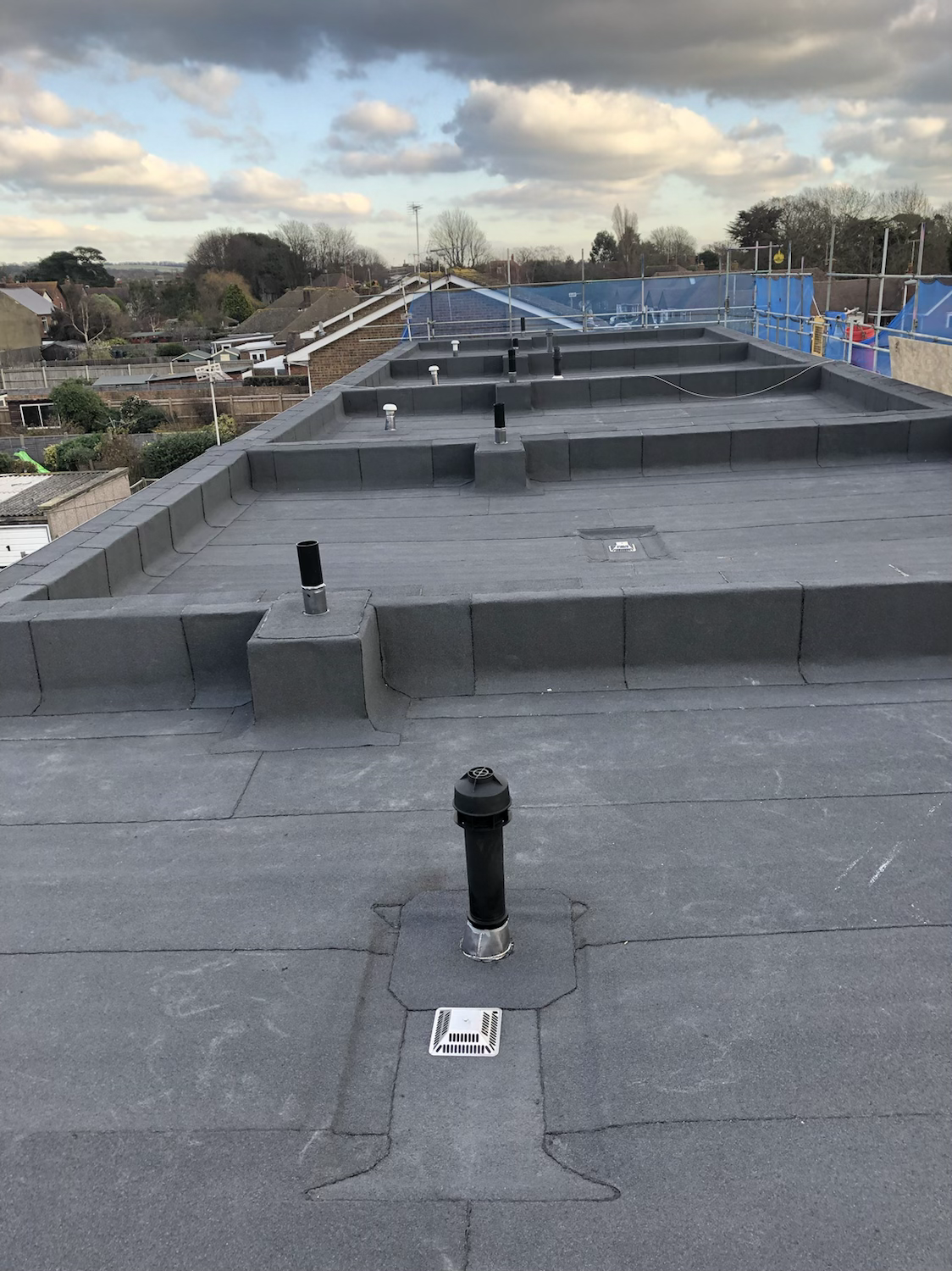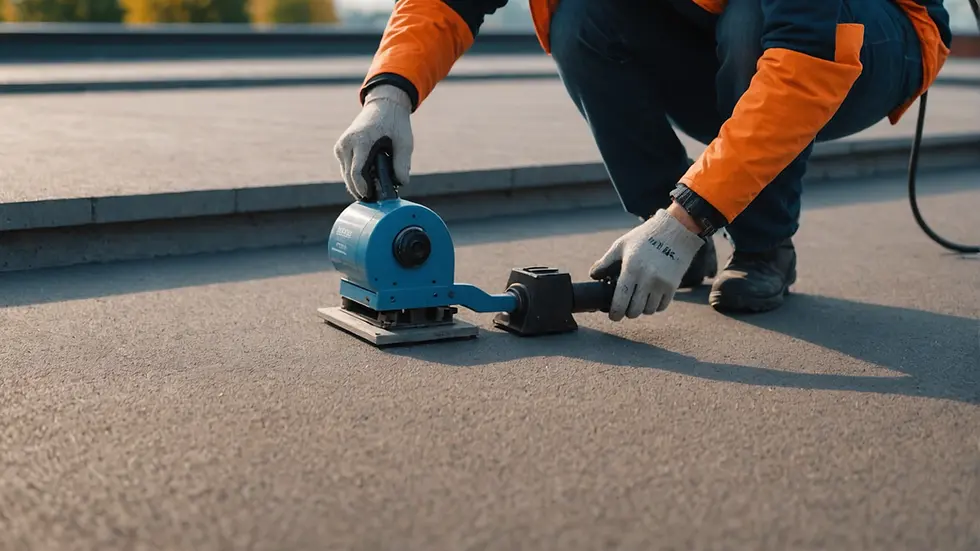Uncovering the Understated Art of Flat Roof Felting: A Professional Perspective
- Matt Rayner

- Nov 6, 2024
- 3 min read
Flat roofs are a popular choice for many types of buildings due to their unique look and practical benefits. Among the various methods to protect these roofs, felting stands out. This art form requires skill and precision. In this blog post, we will explore the basics of flat roof felting, its benefits, the materials and techniques involved, and tips for ensuring a durable roofing solution.
Understanding Flat Roof Felting
Felting is a roofing technique that involves applying multiple layers of felt, usually made from bitumen, to create a waterproof barrier. Unlike traditional pitched roofs that drain water quickly, flat roofs rely on specific installation methods to prevent water pooling and leakage.
Flat roof felting can be found in both commercial and residential buildings. It offers numerous benefits, such as cost-efficiency and ease of maintenance. However, successful installation depends on thoroughly assessing the property’s needs.
The Benefits of Flat Roof Felting
Flat roof felting has several advantages that can enhance its longevity and performance.
Durability: When installed correctly, felt roofs can last 20 to 30 years. This longevity makes felting a solid long-term roofing solution.
Cost-Effectiveness: Flat roof felting tends to be cheaper than other roofing options, often saving building owners up to 15% on initial installation costs.
Ease of Installation: Felting can be simpler and quicker than other roofing systems, leading to labor cost savings and faster project completion.
Energy Efficiency: With proper insulation, flat roofs can improve a building's energy efficiency by 10% to 20%, reducing heating and cooling costs.
Versatility: Flat roofs can be utilized for terrace spaces, gardens, or to house equipment like HVAC systems, maximizing the building's functionality.
Materials Used in Flat Roof Felting
Choosing the right materials is critical for a successful flat roof felting project. Here are the primary components involved:
Felt: The felt is often made from organic materials or synthetic fibers infused with bitumen. The two most common types are:
SBS (Styrene-Butadiene-Styrene): Known for its flexibility and durability, SBS performs well in a range of temperatures and environments. For example, it maintains integrity in temperatures from -40°C to 100°C.
APP (Atactic Polypropylene): Best suited for warmer climates, APP is highly resistant to UV degradation. It is ideal for areas with high sun exposure, such as Southern states.
Bitumen: This essential element acts as a waterproofing agent, binding the layers of felt together.
Adhesives and Sealants: These materials ensure watertight seals at seams and edges, preventing leaks.
Insulation: Including insulation can significantly improve energy efficiency by keeping indoor temperatures consistent, which can also lead to energy bill savings of up to 30%.
Selecting high-quality materials is vital for achieving a flat roof that lasts and looks appealing.
The Felting Process: Step by Step
Surface Preparation: Clean and level the existing roof surface to remove debris and imperfections that can compromise adhesion.
Insulation Installation: If applicable, install insulation before laying down the felt layers.
Base Layer Application: Lay down the first layer of felt using a bitumen adhesive for a solid foundation.
Layering: Add additional felt layers, ensuring seams are staggered to avoid water infiltration.
Finish Layer Installation: The final layer is applied using either torch-on, cold adhesive, or self-adhesive methods, depending on the material.
Sealing: Thoroughly seal all seams and edges to create a waterproof barrier.
This meticulous process highlights that flat roof felting is a skilled craft demanding attention to detail.

Tips for Maintenance and Longevity
To maximize the lifespan of your flat roof felting, consider these practical tips:
Regular Inspections: Schedule inspections twice a year to catch potential issues before they develop into larger problems.
Debris Removal: Keep the roof clear of leaves, dirt, and other debris that can trap moisture and lead to roof damage.
Drainage Check: Ensure that all drainage systems remain clear to prevent water pooling on the surface.
Prompt Repairs: Repair minor damage as soon as it's detected to avoid costly future repairs.
Professional Maintenance: Hire a professional for routine checks to ensure the roofing system remains in top condition.
By proactively maintaining your roof, homeowners and property managers can significantly enhance the performance and lifespan of flat roof felting.
Final Thoughts
Flat roof felting might be overlooked compared to other roofing options, but it offers a unique combination of durability, cost-effectiveness, and versatility. By carefully selecting materials, executing proper installation, and committing to regular maintenance, flat roof felting can provide long-lasting protection and functionality.
As this method evolves, property owners and professionals are increasingly recognizing the craft involved in creating a reliable flat roof. Embracing flat roof felting can lead to impressive outcomes, showcasing its understated importance in building maintenance and design.






Comments